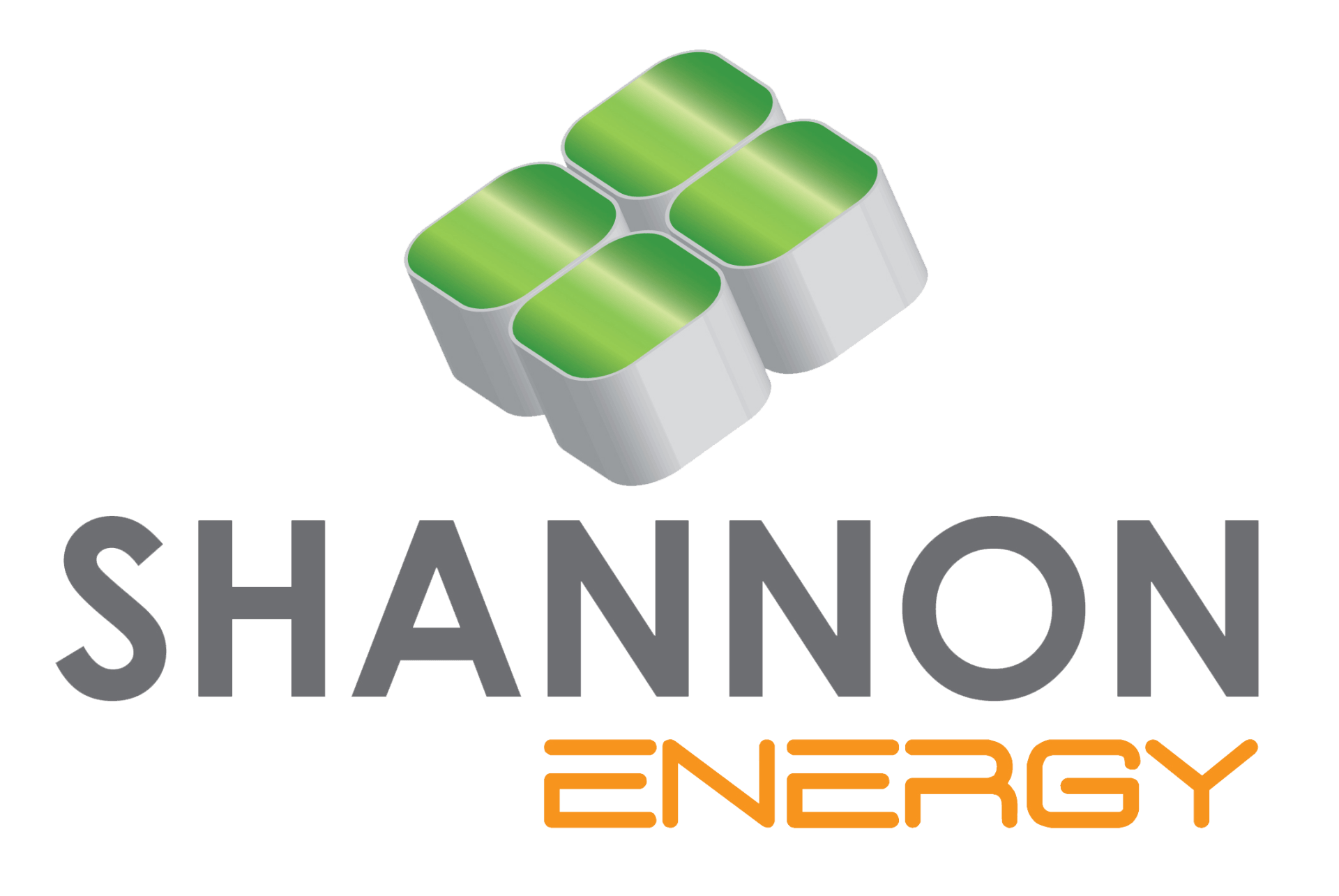Blog

By Noel Shannon
•
28 Jul, 2023
28th July 2023 ......and what could I expect to earn? The ever increasing warnings about the dire consequences of climate change are causing many landowners to consider if their land might be suitable for solar energy production - and if so, then what revenue expectations might there be and generally how to go about an assessment.

By noel
•
19 Aug, 2020
12 August 2020, Aarhus, Denmark and Dublin, Ireland: Shannon Energy powered by Obton is delighted to announce that it has been provisionally awarded all of the 11 solar energy projects it submitted to the first round of the Government’s Renewable Electricity Support Scheme (RESS). The results of the process are scheduled to be finalised on 10 September. The Danish-Irish joint venture’s successful projects in the RESS process represent an initial investment of €100 million in the Irish solar energy sector, which when developed will deliver a total of 120 megawatts (MW) of solar power for homes throughout the country. The 11 projects are situated in eight counties throughout Ireland, with sites located in Cork, Galway, Longford, Meath, Offaly, Tipperary, Waterford and Wexford. The combined 120 MW of power generated will be enough to fulfil the yearly energy requirements of up to 20,000 households. The projects will be fully operational and supplying renewable energy to the Irish power grid by 2022 and it is expected that more than 200 jobs will be created in the construction of the solar photovoltaic (PV) technology. Shannon Energy powered by Obton is a joint venture between Obton, a Danish solar photovoltaic (PV) business, and its Irish partner Shannon Energy. The project portfolio that has been successful in the provisional results of RESS 1 marks the first phase in the joint venture’s overall €300 million investment to provide over 500 MW of renewable solar power in Ireland over the next five years . Commenting on the provisional RESS results, Anders Marcus, CEO of Obton, said: “We are delighted that all of our 11 projects have been successful in the provisional results of the public auction process. These 11 projects are an important vote of confidence in our investment in sustainable energy generation in Ireland and in our partnership with Shannon Energy. Together with Shannon Energy we have secured a pipeline of projects that will bring the total capacity of our overall portfolio to more than 500 MW, which will be submitted in subsequent rounds of the RESS process.” Noel Shannon, CEO of Shannon Energy, said: “Shannon Energy powered by Obton are delighted to have been provisionally awarded all of our 11 projects in the first phase of the RESS process. We believe the result represents the quality of this initial portfolio and we are looking forward to working with all of our partners to move forward with these projects and bring more renewable energy to the grid in Ireland.” Gerry Shannon, Chairman of Shannon Energy, added: “This success with our first 11 projects marks a significant milestone for Shannon Energy powered by Obton and reflects a huge vote of confidence in the Obton fund's decision to invest in Ireland. We look forward to working with our partners to construct all these projects as quickly as possible and help the Government achieve its goal of 70% electricity production from renewable sources by 2030.”

30 Apr, 2020
Irish Times - 30/04/2020 Irish group Shannon Energy and Danish company Obton plan to kick off a €300 million investment in the Republic by spending €60 million on plants that will generate electricity from solar power. Shannon and Obton formed a joint venture this year to build solar farms, which use panels of specially manufactured cells to convert the sun’s heat to electricity, around the Republic. They plan to spend €60 million developing their first 11 solar farms here. The generators will produce 105 mega watts (MW)of electricity, enough to cover the energy consumption of 20,000 homes, the pair say. The investment will be the first tranche of an overall €300 million that they intend spending on developing solar farms that will produce about 500 MW of electricity at full capacity. Their plans could employ up to 1,000 people. Shannon and Obton have been in talks with farmers around the Republic to acquire the 2,000 acres they will need for the overall plan. Work on the first 11 projects could create up to 200 jobs. The solar power plants will be in counties Cork, Galway, Longford, Offaly, Tipperary, Waterford and Wexford. Shannon Energy and Obton will bid for aid for the developments from the Government’s Renewable Energy Support Scheme, which will back plans that generate electricity at the lowest cost. The pair must submit the projects for inclusion in the scheme’s first round today, Thursday April 30th. The original closing date was early this month, but the Covid-19 crisis led to this being postponed. National grid operator Eirgrid will oversee the auction, which will be held in July. This will be the first of several that the State will run over coming years as it bids to lure more investment in renewable energy. Support scheme The Government wants renewable power to generate 70 per cent of the electricity used in the Republic by 2030. It averages at about 30 per cent at the moment. However, figures released this week by the Sustainable Energy Authority of Ireland show that wind generated almost 44 per cent of the electricity used in the Republic through the first three months of this year. The new scheme will replace the previous renewable energy feed-in tariffs that paid guaranteed prices to companies generating electricity from green sources such as on-shore wind. Solar power and off-shore wind farms will qualify for supports under the new support scheme. That system is also designed to cut the cost to consumers and businesses of aiding renewable energy. Opening the new system to technology such as solar and off-shore wind prompted several big European players to consider investing here. Noel Shannon, chief executive of Shannon Energy, said that he hoped his company’s joint bid with Obton would succeed July as that would allow them “proceed rapidly” with their development plans. “By participating in the renewable energy support scheme auctions we are marking a significant contribution towards achieving the Government’s goal of 70 per cent electricity production from renewable sources by 2030,” Mr Shannon added. Anders Marcus, chief executive of Obton, described the 11 projects as an important milestone in its work and in its partnership with Shannon Energy. Obton has invested in solar energy projects worth a total of €1.85 billion across Europe and Canada. It has operations in Belgium, France, Germany, Hungary, the Netherlands and Poland. Dublin-based Shannon Energy is involved in similar businesses in Ireland, Britain and western Europe and previously worked on projects in South Africa.

14 Jan, 2020
Barry O'Halloran, Irish Times, Wednesday 8th Jan 2020 Danish group Obton and Irish company Shannon Energy plan to spend €300 million building plants that will generate electricity from solar power in the Republic. Obton and Shannon Energy said on Wednesday that they had formed a joint venture to develop solar farms, which use panels of specially manufactured cells to convert the sun’s heat to electricity, in the Republic. The pair intend spending €300 million over three years on building solar farms that will generate up to 500 megawatts (MW) of electricity, creating about 1,000 jobs in the process. Obton chief executive Anders Marcus said the Danish company would provide most of the cash, while Shannon Energy would provide local expertise and do much of the work on the ground. The joint venture has earmarked sites in counties Cork, Galway, Longford, Tipperary and Westmeath where it will instal solar panels capable of producing 150MW of electricity, enough energy to cover the yearly consumption of 25,000 homes. Mr Marcus said the business was in talks with farmers about acquiring other sites around the Republic where it could instal the remaining 350MW. Overall it will need 2,000 acres for its plan. Government support Government promises to launch a new scheme to provide cash support to renewable energy projects, mainly wind and solar power, helped lure Obton to the Republic, according to Mr Marcus. He pointed out that renewable energy still needed a “bit of back up to make sense investment-wise” so proposals for the scheme were a factor in Obton’s decision to invest here. “The way it is structured, with an auction system, is the right way to ensure that people do not pay too much for electricity,” Mr Marcus added. All electricity users, including homes and businesses, will fund the Government’s proposed Renewable Energy Support Scheme through a public service obligation charge on their bills.
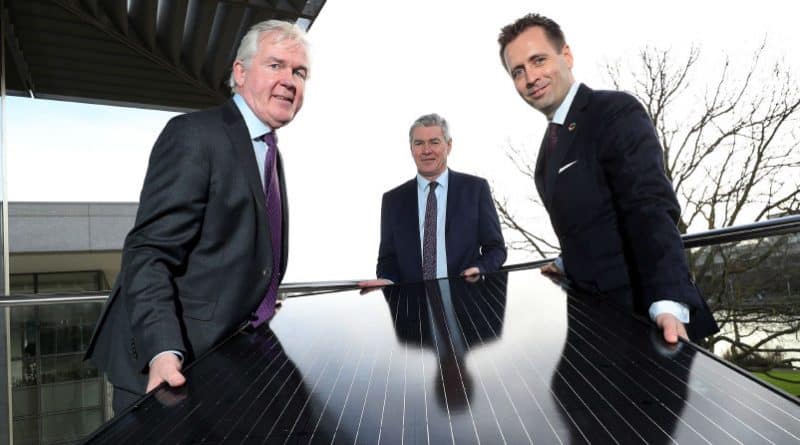
14 Jan, 2020
The investment will see over €300m being spent in the Irish economy at today’s energy prices and will create over 1,000 jobs particularly during its construction phase. Obton’s significant investment in the Irish solar energy sector was launched today by Anders Marcus, Obton CEO, Mark Foley, Eirgrid CEO, and H.E. Uffe Balslev, Ambassador of Denmark, at an event in University College Dublin. This investment will see around 2,000 acres of farmland converted to the production of renewable energy, helping to deliver the Government’s strategic goal of zero carbon emissions by 2050. In 2018, Obton formed a joint venture with Dublin-based Shannon Energy. Together they are building an impressive pipeline of solar power investment projects in Ireland and are committed to playing a key role in the transition towards renewable energy. In conjunction with the investment announcement, Obton and Shannon Energy have also announced details of their first three strategic project acquisitions: the Grian portfolio of solar projects in Westmeath, Longford and Tipperary; the IGP portfolio of projects in Tipperary and Cork; and the Wind Energy Direct solar project in Galway. These three projects will deliver approximately 150 MW of solar power, which would be enough energy to cover the yearly energy consumption of 25,000 homes. Speaking at the launch event, Anders Marcus, Obton CEO, commented, “Obton’s vision to create a sustainable future for the coming generations is of highest priority. Through Shannon Energy and our business partners, we are in a great position to do just that in Ireland.” Commenting on the investment announcement, Noel Shannon, Shannon Energy CEO, said, “Shannon Energy are delighted to have secured the financial strength for constructing Utility Scale solar projects in Ireland, through our partnership with Obton, and we look forward to securing the licences for our planned implementation in the upcoming Renewable Electricity Support Scheme (RESS) auctions over the next five years.” Welcoming the announcement Mark Foley, Eirgrid CEO, commented, “As the operator of the national electricity grid in Ireland, EirGrid is committed to achieving 70% renewable energy on the power system by 2030. Investments in renewable energy projects, such as the one announced by Obton and Shannon Energy today, are critical to achieving that goal.” H.E. Uffe Balslev, Ambassador of Denmark commented, “Obton is an ambitious Danish company with long experience within solar power investment in many countries. I am proud to support their entry into the Irish market and excited about their expected substantial contribution to making Ireland meet the 2030 renewable energy targets of the Government’s Climate Action Plan.”
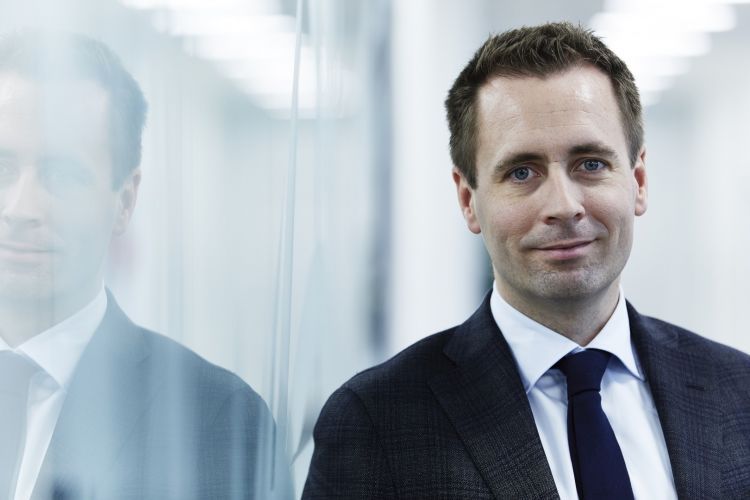
14 Jan, 2020
By Cecilia Keating Jan 08, 2020 PV Tech Danish renewables investor and developer Obton Energy has formed a joint venture with Irish solar developer Shannon Energy to develop 500MW of solar in Ireland over five years. In interviews on Wednesday morning with PV Tech, both companies confirmed that Ireland’s forthcoming inaugural renewable energy auction scheme spurred the €300 million plan. “Ireland is fertile ground thanks to the government’s new auction process,” Gerry Shannon, who runs Dublin-based company with his brother, explained. Ready-to-build projects totalling 150MW have already been secured and developed, he said, and the partners intend "to reach further back into the development process and look to secure greenfield sites” over the next five years, too. A number of European and Irish banks are “ready to give” debt finance to the operation, according to Shannon. Details of Ireland’s long-awaited Renewable Electricity Support Scheme (RESS) were unveiled in December. The first, 300GWh, auction is scheduled for the summer. The government has devised the scheme, which will be administered by Ireland’s transmission system operator EirGrid, in order to increase renewables' share of Ireland's electricity to 70% by 2030 from about 40% today. “Ireland has launched some ambitious plans for the future and we would like to be part of that,” Anders Marcus, chief executive officer of Obton, told PV Tech. He said that the JV hoped to win “about 100MW” of capacity in the maiden auction. The JV has already secured one-third of the 2,000 acres it estimates it needs to roll out 500MW, according to Marcus. His firm will lead on equity financing while Shannon Energy will front local development efforts. Future projects likely to involve energy storage and corporate offtakers Obton's Marcus noted that Ireland’s grid will be tested by the influx of new capacity ushered in by the auction program. “It’s one thing to launch ambitious plans; the other is to prepare the grid. We are confident that Ireland will be able to fulfil that, but that’s something that needs to be proven,” he said. Both Shannon and Marcus confirmed that while energy storage was not included in short-term plans, it is likely to be included in the long-term. Corporate offtakers will also be considered in due course. “Corporate PPAs tend to be shorter term, five or seven years, and we’re going to hold these projects for 30 years, meaning we would prefer to have a longer-agreement," said Shannon. "In the future, if we can find a corporate PPA or a private PPA that would be suitable for us, then of course we will go ahead and construct, provided that the bank regards to paperwork of such a PPA to be a viable risk.” Marcus said: "We are putting all our attention in the coming auction. When we see the results, then we will have the possibility to do PPA outside of the system. But the focus right now is the auction."
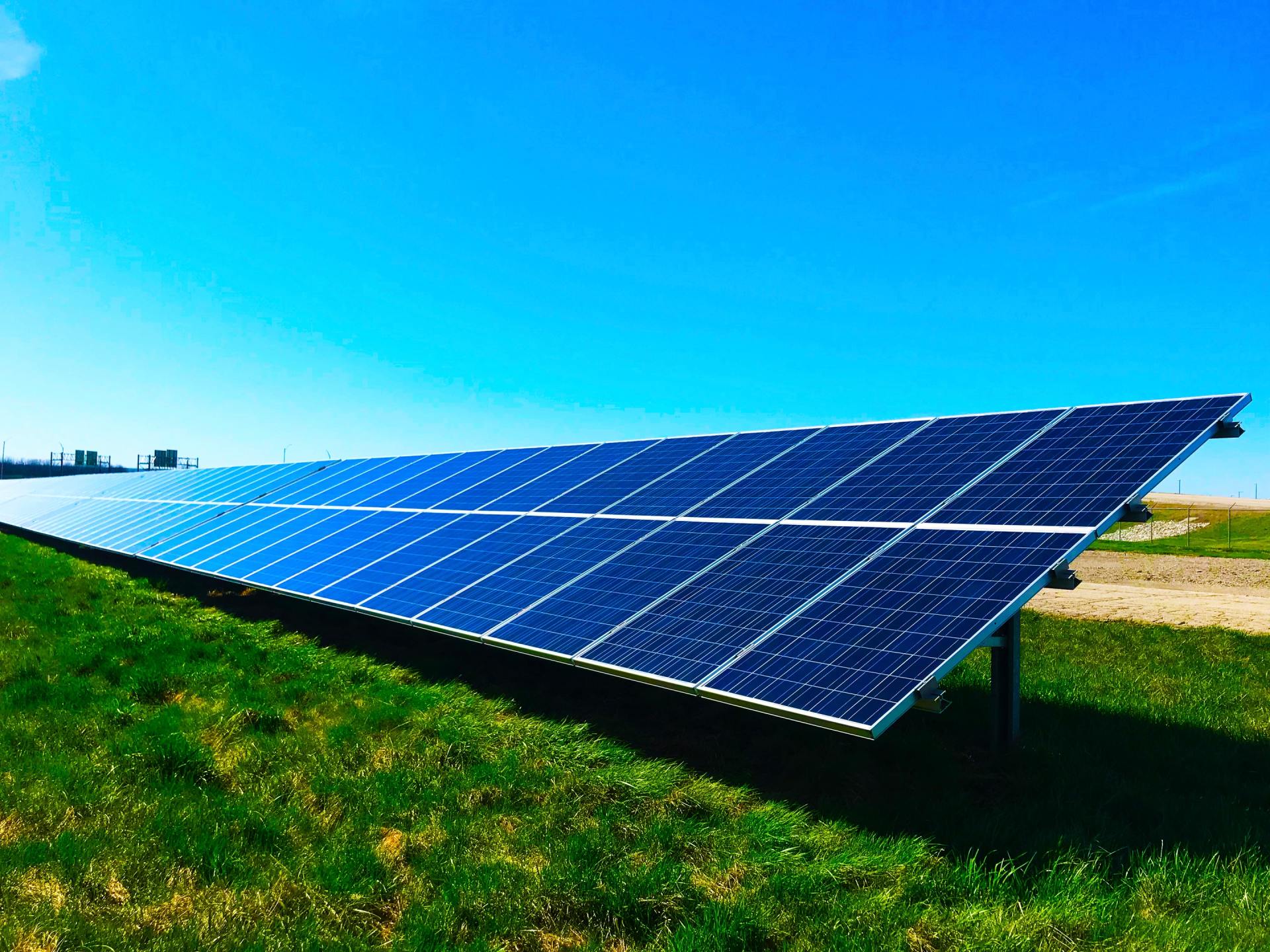
By noel
•
28 Nov, 2019
''Our newest solar fund will accommodate investments in solar parks for DKK 12 billion, and allow investors to put their money in a 100 per cent green product that benefits both them and the community. Many European countries are lagging behind the EU's climate targets, and solar energy is an obvious choice for greener energy production. This is where private investment fits in perfectly and helps lift the world in a more sustainable direction'', says Obton Investment Director Oliver Peters. “Impact” is an energy company that owns solar parks in a number of countries, such as Germany, Ireland, France and the Netherlands, and produces electricity from the solar parks to consumers. A smaller part of the portfolio will consist of solar parks in North America and Asia, where solar energy is currently rising massively. The project is aimed at professional and semi-professional investors and has an expected equity of DKK 3 billion. kr. Obton has been in the solar energy market for over ten years and was thus one of the first players in the industry. Ten years ago, when we had to spend time convincing both countries and investors about the benefits of solar energy, today we see a completely different interest in the field. The massive international awareness of climate change and how to convert to sustainable power generation, coupled with rising module prices, has meant that solar energy is growing massively in large parts of the world, and we have high expectations for the years to come, says Oliver Peters. Obton is already experiencing great interest in the new solar fund, replacing Obton's former fund "Stabil", which raised more than DKK 2 billion. and already have solar parks for DKK 8 billion. DKK in eight countries. More and more investors have found that you do not have to compromise on returns, even if you want to invest green. Today, there is simply money in sustainability, which is not just about solar energy. We see a global megatrend with a market potential that, over and over again, exceeds all expectations, says Oliver Peters.
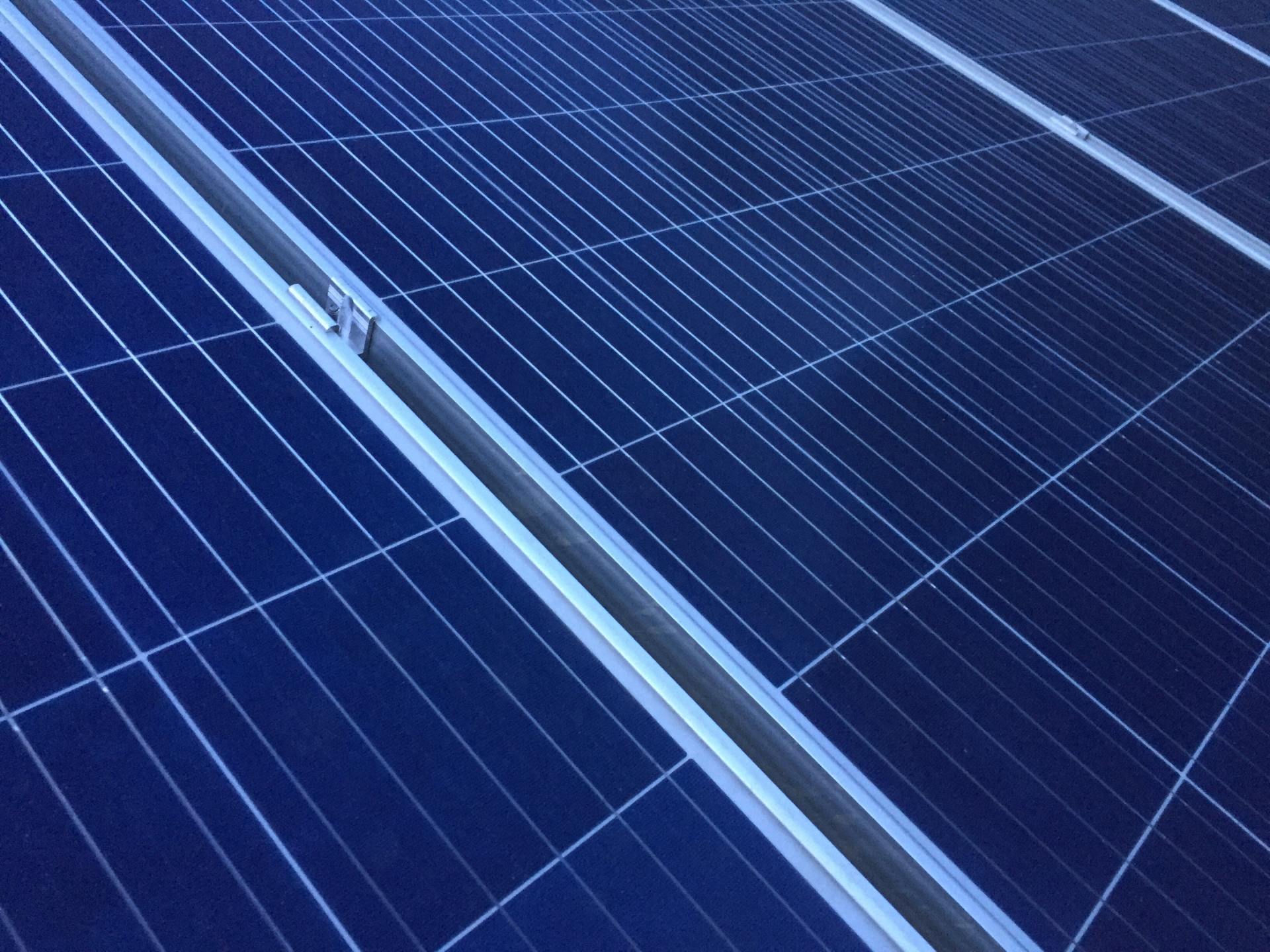
By noel
•
20 Nov, 2019
Corporate demand for renewable energy will only continue to rise in the future. To understand what is driving the change, you need only look at IKEA. The global furniture retailer is rapidly becoming a corporate activist in the area of sustainability. One of the first milestones is IKEA’s own energy consumption, and a company the size of IKEA has the power to increase global demand for renewable energy, explains our analyst. In many ways, being the world’s most well-known retail furniture brand seems at odds with sustainability. IKEA makes well-designed and inexpensive furniture available to 830 million customers annually (a staggering 2.3 billion customers shop in IKEA online store), and this naturally requires a significant consumption of energy and natural resources. But perhaps it is directly as a result of IKEA’s massive environmental footprint that the retail furniture chain has committed itself to one of the world’s most ambitious sustainability strategies. Published in June 2018, IKEA’s sustainability strategy “People & Planet Positive” sets out the company’s ambitions to be not just “less bad” or neutral in its use of energy and natural resources - but to be a net positive force. - It is hard not to overestimate the significance of IKEA’s sustainability strategy. A company of that size has more power than many national governments, says Teresa Conde Muñoz, Transaction Specialist at Obton. Consumers are adding to the pressure To understand why companies like IKEA are making significant changes to the way they do business, it is worth looking at the changing attitudes among consumers. - There is a sense of urgency in the general public about climate change, says Teresa Conde Muñoz, and points to a recent survey published by the European Investment Bank (EIB) and YouGov. The study showed that 78% of EU citizens are concerned or alarmed by climate change (63% in US and 65% in China). - Obviously, people are looking to their governments to act, but increasingly consumers also expect companies to play a role in tackling climate change, says Teresa Conde Muñoz. The EIB study also showed that 67% of Europeans say that the impact of a product on climate change is very or fairly important when purchasing items. - Companies are increasingly coming under pressure from consumers and investors to reduce their carbon footprint, says Teresa Conde Muñoz. Her company, Obton, is experiencing increased interest in solar energy from both large and smaller companies across Europe Renewable energy goal fast approaching IKEA is one of many companies showing how corporations can lead the way on climate change. The company’s overall ambition is to “become climate positive and regenerate resources while growing the IKEA business” by 2030. One of the first goals of the strategy is fast approaching: To cover 100% of its energy demand with renewable energy sources by 2020. IKEA looks likely to achieve this goal. In 2018, the company already had covered 81% of its energy demand with renewable energy. The key components of IKEA’s renewable energy mix are 440 wind turbines, as well as a staggering 900,000 solar panels on the roofs of its many stores. Produce and purchase renewable energy Apart from building its own renewable energy production on site, IKEA also typically signs power purchase agreements with off-takers to cover its renewable energy demand. In this regard, IKEA joins a rapidly growing number of businesses working to reduce their carbon footprint. Globally, 179 major companies so far have committed themselves to procure 100% renewable electricity through the RE100 initiative. Among the signatories to the initiative are companies such as 3M, AkzoNobel, Coca Cola, Facebook, Google, H&M, Johnson & Johnson and many more. - These big companies are driving demand for renewable energy – independently of national governments, but it is still necessary that public and private actors motivate and guide medium and small companies to be sustainable, says Teresa Conde Muñoz. As a result, the business case to switch to 100% renewable electricity has never been stronger. Cheaper than fossil fuels A recent report by the International Renewable Energy Agency (IRENA) documented that renewable energy is already the cheapest source of energy in many parts of the world. The report examined renewable energy projects from 2018, comparing the latest cost and auction price data. It clearly shows that costs from all commercially available renewable power generation technologies decreased even more in 2018 – with solar photovoltaic (PV) and onshore wind costs decreasing by 13%. The report concluded that onshore wind and solar PV are now frequently less expensive than any fossil fuel option – even without financial assistance. The corporate rush to renewables With major corporate players like IKEA leading the way while the costs of renewable energy production continue to decline, we are clearly on the verge of a breakthrough in corporate PPAs. - We will be seeing a steady rise in corporate PPAs – and a solar market that is able to move forward independently of government support, says Teresa Conde Muñoz. BloombergNEF (BNEF) documented in its Corporate Energy Market Outlook that corporations bought a record amount of clean energy through PPAs in 2018. A total of 13.4 GW of clean energy contracts were signed by 121 corporations in 21 different countries. According to BloombergNEF, this trend will only continue – driven by growing global corporate alliances such as RE100. Want to hear more about how your company can reduce its carbon emissions?

30 Sep, 2019
EU member states will have to raise the bar to achieve the common 2020 goals for sustainable energy. As things stand now, we are headed in the wrong direction. Solar PV systems could be a future solution if the EU is to reach the next climate goals. We have heard it all before. The ice caps are melting, water levels are rising, and Pacific islands will see flooding. These are the consequences of the global CO2 footprint. Therefore, It is critical that the EU member states continue to wave the green banner and make an extra effort to achieve the common goal of 20 percent of all energy consumption in the EU coming from green energy sources by 2020. But even if, overall, the EU countries are on their way to meeting the climate goals, many countries are lagging behind and, in all likelihood, will not reach their individual 2020 goals. This is the conclusion of a report from the European Environment Agency (EEA). And that is a problem, according to Senior Business Developer at Obton Klaus Andersen, who has kept a close eye on the European energy sector for many years. He sees solar PV as an obvious choice if member states – that are far away from the finish line – are to reach their goals. If not in 2020, then in 2030, when the EU goal is for 32 percent of the total energy consumption to come from sustainable energy: “If we don’t get our acts together, there are going to be serious consequences for the entire planet”, says Klaus Andersen, adding: “The biggest challenge is that 2020 is right around the corner. So it is unlikely that all countries will reach their goals. It takes a long time to transform your power plant production or switch to, e.g. wind power. It also takes time to switch to solar cells. But solar PV projects tend to be approved faster and easier to deal with from a purely technical perspective. So they could be a possible solution to helping member states to reach their goals for 2030.” Energy consumption in the EU is increasing The report shows that sustainable energy's share of the final energy consumption in the EU has doubled since 2005. But even though the EU is on its way to achieving its goals for 2020, the share of energy from sustainable energy sources is no longer growing as fast. It rose from just 16.7 percent in 2015 to 17 percent in 2016 and 17.4 in 2017. This is because the total final energy consumption in recent years has risen in some EU member states – especially in the transport sector. There, the share coming from sustainable energy was just 7 percent in 2017 – with the majority coming from biofuels. In comparison, 85 percent of all new electrical capacity came from sustainable energy. And wind power and solar cells accounted for three quarters of this energy. “For some countries, it is a very ambitious goal, while for others, it is not so ambitious. One could say that Europe is split in two. The Nordic countries, as always, are leading the pack, while the countries of Southern Europe are having a harder time keeping up.” That is also in the report. There are countries where over 30 percent of the final gross energy level comes from sustainable green energy. This is true of countries such as Sweden, Denmark, Finland, Austria and Latvia, while countries such as Belgium, Luxembourg, Malta and the Netherlands are below 9 percent. EU citizens are concerned about the climate The domestic political climate in the various EU countries determine in part why achieving the individual climate goals can take so long, Klaus Andersen explains. He points out that politicians often make decisions based on what gets the most votes – for instance, nursery schools and nursing homes. The climate has not typically been at the top of the list. “In the latest elections in Denmark, however, climate policy was a hot topic. And in Germany and the Netherlands, it has also been high on the agenda.” If you ask the European population, the climate is an important topic. As Obton recently wrote in an article on the ‘IKEA effect’, 78 percent of EU citizens are concerned about climate change – while that is only the case for 63 percent in the USA and 65 percent in China. Klaus Andersen notes that we should turn our attention to those countries that are lagging behind – and where there is still the political will to switch to green energy. If you look south of the border – to the Netherlands and Germany, these are countries he believes are worth focusing on. They have namely established a system that promotes sustainable energy production from, e.g. wind and solar. And this could be the path forward for getting the wheels turning on the green energy machine. “The Netherlands has licensing rounds where energy projects are contracted out, so you can bid with the possibility of winning the contract and getting a government subsidy. Several countries are adopting their own similar model.” 2050 goal was abandoned It is not only 2020 and 2030 that countries have their sights on. Of the EU countries, a majority of them will make 2050 the year that the EU becomes CO2-neutral. But at the climate meeting in June it became clear that the countries could not reach an agreement after all on a joint EU strategy for CO2-neutrality. This, despite the EU heavyweight Germany having just announced it would back up a strategy for CO2-neutrality – just as 17 other EU countries did. Instead, the countries now point in a memorandum to the UN's 2015 Paris Accord, in which the 2050 goal is to maintain the overall rise in temperature to below 2 degrees Celsius. Get control in one's own back yard It is important now that those EU countries that are lagging behind understand the gravity and reach the climate goals. Not only is there pressure from the EU on the individual countries, but it is also the EU’s goal to pressure the rest of the world at the UN Climate Action Summit in New York on 23 September: “Scandinavia, and now the EU, too, have taken the lead on waving the green energy banner. So it is important that we hold the banner high and reach out to the big energy countries when global energy policy is discussed at the highest levels. If the EU cannot control what goes on in its own back yard, it is easy for other countries to point a finger at us.” China, India and the USA are the big energy consumers in the global arena and accounted for two thirds of the total increase in energy consumption in 2018. “So it is here that the real work lies”, says Klaus Andersen
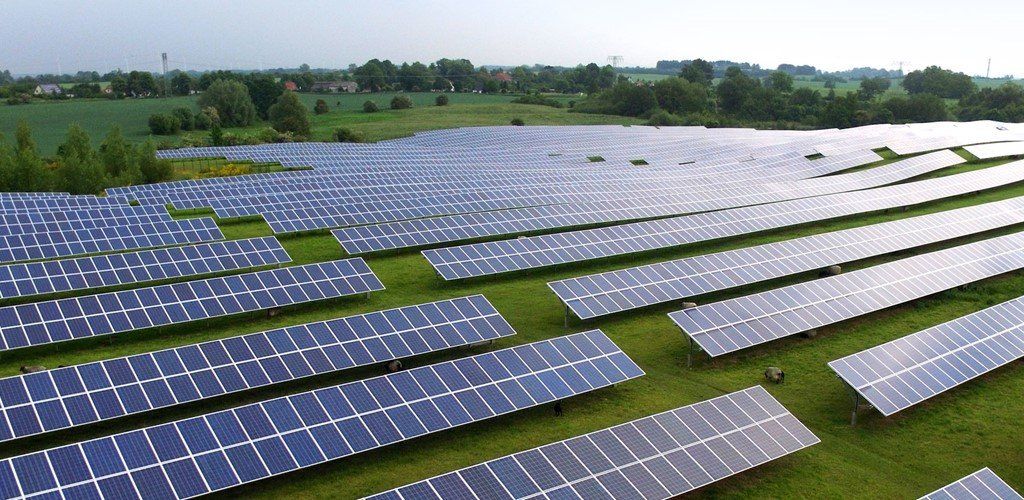
26 Sep, 2019
The days of making wild and undocumented claims about sustainable investments may soon be over. With its new detailed list, the EU aims to provide investors with a clear framework for assessing whether an investment is sustainable or not. This is obviously good news for solar PV facilities – although there are some conditions. For many years, investors were at the mercy of their advisors when making sustainable investments. The absence of widely recognized sustainable investment criteria has made it extremely difficult for investors to distinguish between truly sustainable investments and “greenwashing”, says Obton’s CEO, Anders Marcus. The biggest investors – typically pension funds and other institutional investors – have traditionally relied on the UN’s Principles for Responsible Investment (UNPRI) to evaluate potential investments. The institutional investors signing up to these principles commit to incorporating the so-called ESG (Environment, Social and Governance) issues into their investment analysis and decision-making process. Today, the job of assessing an investment’s ESG rating is carried out by private ESG rating agencies. Although these agencies have become increasingly professional, there are no widely recognized principles for their assessments, and agencies have been known to give different ratings for the same investments, says Anders Marcus. However, with its taxonomy the EU is working to improve this by creating a set of universal principles to evaluate an investment’s sustainability. A taxonomy for sustainable investments As part of its Action Plan for Sustainable Finance, the EU has established a Technical Expert Group to develop a Taxonomy approach for environmentally sustainable economic activities. The group presented its first draft taxonomy in June 2019, which will be adopted by legislators before the end of the year. The EU taxonomy is a classification system that seeks to separate the wheat from the chaff when it comes to assessing sustainable investments within different sectors of the economy, says Anders Marcus. It is a tool to bridge the gap between international sustainability goals, such as the Paris climate agreement and investment practice. The EU is serious about pushing financial markets in a more sustainable direction. To reach their climate and energy goals, an additional €180bn per year is needed. For this reason, the EU taxonomy only includes projects that are in line with the EU’s ambition of net zero emissions by 2050. It has the potential to become the gold standard for sustainable financing, says Anders Marcus. Solar (naturally) makes the list The EU taxonomy has set up criteria for different sectors, and the first sectors to be included are agriculture, manufacturing, energy, water, waste, transport, ICT and buildings. More sectors are set to follow. The set of criteria distinguishes between economic activities that may themselves be decarbonized, or activities that enable decarbonization in other sectors. Solar PV obviously plays a central role in the EU taxonomy. Not only as a direct means of shifting our energy production into a more sustainable direction, but more crucially as a way of “greening” other sectors, says Anders Marcus. The manufacturing sector is an excellent example. The European manufacturing sector is the second largest contributor of CO2 emissions and has a significant potential to reduce its emissions. Both solar PV facilities and the manufacturing of components for solar PV panels will be deemed “sustainable investments” under the proposed EU taxonomy, says Anders Marcus. However, some conditions apply for solar PV facilities to be eligible. It is also worth noting the industries, that are not included in the taxonomy. Most prominently, maritime shipping and aviation are not included. These industries are obviously important to greenhouse gas emissions, but the EU’s expert group has yet to find solid criteria to evaluate them, he says. Increasing demands for efficiency Because the EU taxonomy is designed to aid the EU in its ambitions to become a net-zero CO2-emitter by 2050, demands will be steadily increased. Only solar PV facilities operating at life cycle emissions of 100g CO2 e/kWh will be eligible from the outset. This threshold will be reviewed every 5 years to ensure that emissions decline to 0g CO2 e/kWh by 2050, says Anders Marcus. He adds that the EU taxonomy also will take into account any potential negative environmental damage resulting from solar PV facilities such as development of a facility in designated conservation areas or areas with important ecosystems. Getting familiar with the EU taxonomy At the moment, the EU taxonomy is still only a political proposal expected to be adopted by the EU before the end of 2019. The next step will be to implement the EU taxonomy into the regulations of member states – and not least to familiarize the financial sector with the tool. This taxonomy is the first and most comprehensive of its kind in the world, and it will apply to all financial players that label their portfolio as environmentally sustainable. It will obviously take some getting used to for investors, and it will be interesting to see how they apply it to their investment practice, says Anders Marcus. But the bottom line for solar investors is clear: The EU taxonomy will only increase demand for solar energy because it is a key component in the green transformation of many sectors, he says.
© 2024
All Rights Reserved | Shannon Energy
